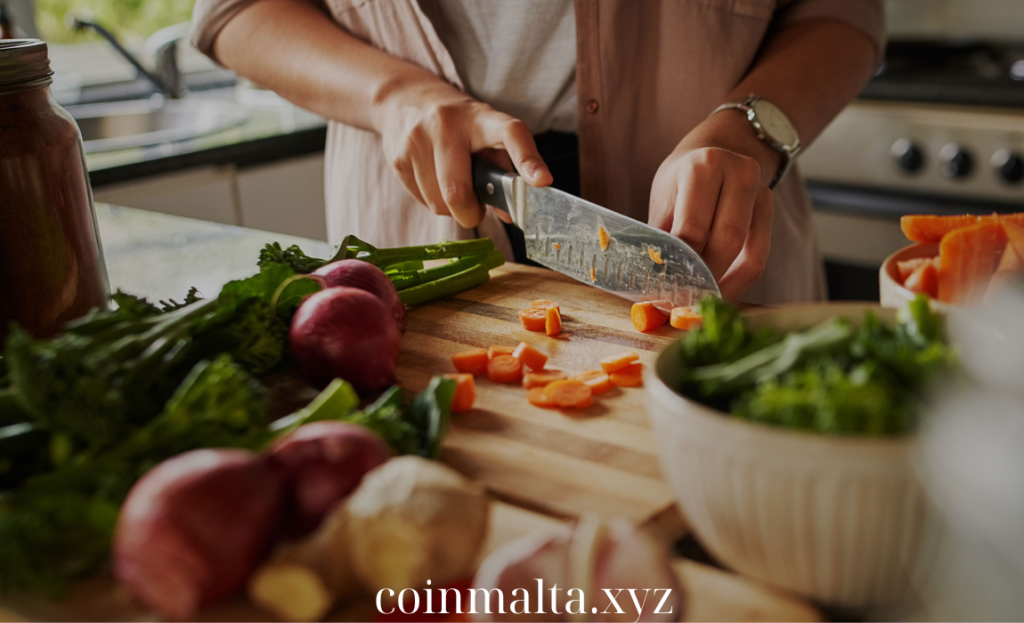Home Food Safety
Preventing Foodborne Illness at Home: Essential Tips for Safe Food Handling
Ensuring that food is prepared and stored safely at home is crucial for avoiding foodborne illness. Every year, millions of people fall ill due to foodborne bacteria, viruses, or toxins, often stemming from improper food handling and preparation. By following simple yet effective practices, you can significantly reduce the risk of contamination and ensure that the meals you serve are both delicious and safe. In this guide, we’ll explore the best strategies for preventing foodborne illness at home, including proper storage, cooking, and cleanliness.
1. Proper Food Storage: The First Step in Preventing Foodborne Illness
One of the key strategies for preventing foodborne illness at home is ensuring that food is stored correctly. Bacteria can multiply rapidly at certain temperatures, so knowing how to store perishable items can help prevent the growth of harmful pathogens.
- Safe storage temperatures:
- Refrigerator: Keep your refrigerator at or below 40°F (4°C) to slow bacterial growth. Raw meat, poultry, seafood, and eggs should always be stored in the refrigerator.
- Freezer: Set your freezer to 0°F (-18°C) to prevent bacteria from growing. Frozen foods should be stored properly in sealed containers or vacuum-sealed to avoid freezer burn.
- Tips for proper food storage:
- Store raw meat, poultry, and seafood on the bottom shelf of the fridge to prevent juices from dripping onto other foods.
- Keep perishable items like dairy products, eggs, and leftovers in airtight containers to preserve freshness and avoid contamination.
- Label and date food containers to ensure leftovers are used before they spoil.
Tip: When thawing frozen food, always use the refrigerator or microwave—never thaw food on the counter as this can lead to bacteria growth.
2. Cleanliness is Key: Keeping Your Kitchen and Tools Germ-Free
Maintaining a clean kitchen is essential for preventing foodborne illness at home. Bacteria can easily spread from contaminated surfaces or tools to your food, so it’s crucial to keep your cooking space and utensils sanitized.
- Cleaning tips for preventing cross-contamination:
- Wash hands: Always wash your hands with soap and water for at least 20 seconds before and after handling raw foods, especially meat, poultry, and seafood.
- Sanitize surfaces: Regularly clean countertops, cutting boards, and knives with hot, soapy water. Disinfect surfaces with a kitchen-safe sanitizer, especially after handling raw meat.
- Separate cutting boards: Use separate cutting boards for raw meat and vegetables to prevent cross-contamination.
- Clean utensils: Wash all utensils, plates, and cutting boards used with raw meat immediately after use. Do not reuse the same plate or utensils without washing them first.
Tip: Invest in color-coded cutting boards (one for meat, one for vegetables, etc.) to make it easier to prevent cross-contamination in the kitchen.
3. Cooking to the Right Temperature: Killing Harmful Bacteria
Cooking food thoroughly is one of the most effective ways to eliminate harmful bacteria and viruses that cause foodborne illness. Each type of food requires different minimum internal temperatures to be considered safe for consumption.
- Safe cooking temperatures:
- Poultry: Chicken, turkey, and other poultry should be cooked to an internal temperature of at least 165°F (74°C).
- Ground meats: Ground beef, pork, and lamb should reach a temperature of at least 160°F (71°C).
- Seafood: Fish and shellfish should be cooked to 145°F (63°C), until the flesh is opaque and flakes easily.
- Eggs: Eggs should be cooked until both the yolk and white are firm, or scrambled eggs should reach 160°F (71°C).
- Using a food thermometer:
- A food thermometer is the most accurate way to ensure your food has reached the proper temperature. Insert the thermometer into the thickest part of the food (avoiding bones) for an accurate reading.
- Clean the thermometer between uses to avoid spreading bacteria.
Tip: Let meat rest for three minutes after cooking to allow the internal temperature to stabilize and ensure any lingering bacteria are killed.
4. Avoiding the Danger Zone: Safe Food Temperatures
Bacteria multiply rapidly between 40°F (4°C) and 140°F (60°C), a range known as the “danger zone.” Keeping food out of this temperature range is key to preventing foodborne illness at home.
- Tips for keeping food safe:
- Refrigerate or freeze perishable foods within two hours of cooking, or one hour if the temperature is above 90°F (32°C).
- Don’t leave food out at room temperature for extended periods, especially during parties or gatherings. Keep hot foods hot and cold foods cold using chafing dishes, warming trays, or ice.
- When reheating leftovers, ensure they reach an internal temperature of at least 165°F (74°C).
Tip: Use a slow cooker or food warmer to keep dishes hot during events, maintaining a temperature above 140°F (60°C) to avoid bacterial growth.
5. Handling Leftovers Safely
Leftovers can be a convenient option for quick meals, but improper handling can lead to foodborne illness. It’s important to follow guidelines for storing, reheating, and consuming leftovers safely.
- Safe handling of leftovers:
- Storage: Store leftovers in airtight containers and refrigerate them within two hours of cooking. Consume refrigerated leftovers within three to four days, or freeze them for longer storage.
- Reheating: Reheat leftovers to an internal temperature of at least 165°F (74°C) to kill any bacteria that may have developed during storage.
- Avoid re-freezing: Do not refreeze leftovers that have already been thawed, as this increases the risk of bacterial growth.
Tip: Divide large portions of leftovers into smaller, shallow containers for faster cooling in the refrigerator and to reduce the time food spends in the danger zone.
6. Washing Produce Properly
Even fruits and vegetables can carry harmful bacteria or pesticides, making it essential to wash them thoroughly before consumption. Proper washing helps remove dirt, bacteria, and potential contaminants.
- How to wash produce:
- Cold water rinse: Rinse all fruits and vegetables under cold running water, even those with peels that will be removed (like oranges or melons). Bacteria on the surface can spread to the inside when cutting.
- Use a brush: For firm produce like potatoes, carrots, or cucumbers, use a clean produce brush to scrub the surface.
- Soaking leafy greens: For leafy vegetables like lettuce or spinach, soak them in cold water for a few minutes and then rinse thoroughly.
Tip: Avoid using soap or bleach to wash produce, as these are not safe for consumption and may leave harmful residues.
Conclusion: Simple Steps to Prevent Foodborne Illness at Home
By practicing proper food storage, maintaining cleanliness in the kitchen, cooking food to the right temperature, and handling leftovers correctly, you can significantly reduce the risk of foodborne illness at home. These preventive measures are simple but essential for keeping your meals safe and your family healthy. Implementing these tips ensures that the food you prepare is both nutritious and safe to eat, giving you peace of mind as you enjoy your favorite dishes.

